Kintail Mountain Rescue Team Profile

Kintail Mountain Rescue Team Profile
Kintail Mountain Rescue Team has been operating in the Kintail-Affric region of northwest Scotland for over 60 years. Like many other mountain rescue teams in the UK, the team had very humble beginnings.
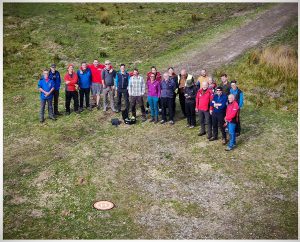
During the 1950s and early 60s, a group composed largely of shepherds, stalkers, foresters and the like formed a rescue unit in Kintail and Glenshiel to help those in trouble on the local hills. By the mid-sixties, records show that the Kintail Mountain Rescue Unit (as it was then labelled) was an established rescue organisation with appointed office bearers.
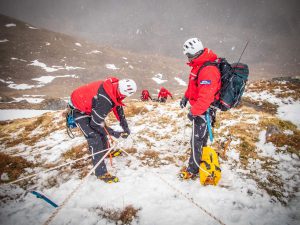
The local topography, characterised by large remote areas, consistently steep ground and well-defined ridges, is of a particularly demanding nature. Even in the earliest times the team was involved in challenging work in all seasons and altitudes, sometimes involving avalanches. Our area includes some of the most impressive and remote landscapes in Scotland, encompassing 39 Munros (peaks over 3,000 feet), including those in Glen Affric, the Five Sisters of Kintail and South Shiel Ridge. The impressive Falls of Glomach and stunning long distance cross-country long route, the Affric Kintail Way, are also in our callout area.
As the growth in the popularity of mountaineering gathered pace through the ‘70’s, ‘80’s, and 90’s, it brought an increase in the number of incidents in the hills. By this time, closer relationships had been forged between the police and civilians in mountain rescue. The local constabulary advised on formal procedures and provided some equipment, while climbers joined the team who brought a more technical approach to rescue work. Press and television attention increased, and the team appeared in both an entertainment programme and a documentary in the 1989 Scottish Television (STV) production series “Rescue”, about the work of D Flight 202 Sqn RAF.
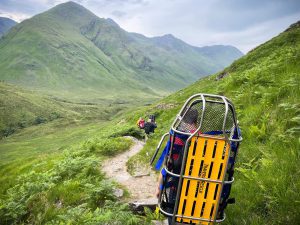
The last twenty years or so have been characterised by transformational developments in the communications technology available to teams, as well as the emergence of a co-ordinated funding and management structure at national level. In 2004 the Scottish Executive’s Justice Department started funding about one third of mountain rescue expenses and paid for a brand new radio system for mountain rescue in Scotland. The radio system included radio transceivers for every rescue base, vehicle and team member. Kintail, like other teams across Scotland, was now able to equip every team member in a manner that ensured their operational safety and enhanced the safety of those they went to help.
Up to present day, we’ve continued to develop our capabilities through recruitment, engagement with local communities and our involvement with Scottish Mountain Rescue. The team has long harboured the ambition of building a new rescue base as the current base, an old byre, is becoming difficult to maintain and the facilities are inadequate for training and equipment storage. We are also in the process of upgrading our response vehicles and have commissioned a van conversion to provide a comms and casualty care van. The low population in the team’s area of operation means that donations from those living further afield are extremely important to our efforts. Fundraising events are an important source of income, so providing additional safety cover at sporting events such as the Affric Duathlon (from 2006), the Dirty Thirty (2009) and the Skye Sportives is vital.
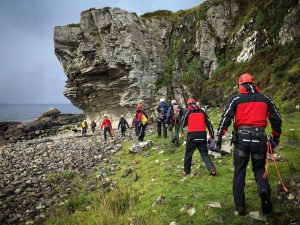
At any one time the team has around 25 members. A typical workload for the team is around nine substantial callouts per year and a number of smaller incidents not requiring full team callout, and we may also be called to assist neighbouring teams. 2023 has been a particularly busy year so far, with sixteen callouts within the first eight months. Historically, it’s been challenging trying to maintain numbers in the team due to the large coverage area and low local population density, so we must draw on members coming from a wide geographic area, from the Isle of Skye in the west to the city of Inverness in the east. In November 2022, we elected the team’s first female team leader, Lara Hinde, who is keen to increase the team’s operational capacity through a recent recruitment campaign and we hope that this, along with promoting our public profile through increased social media presence and fundraising efforts, will allow our team to go from strength to strength.
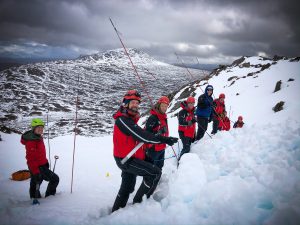
FIND KINTAIL MRT on FACEBOOK @ KINTAIL MRT OR VIA OUR WEBSITE KINTAILMRT.ORG.UK